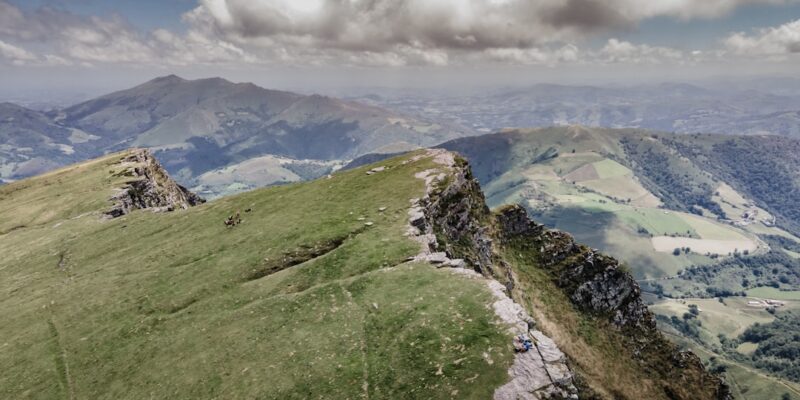
Mastering Mountain Biking: Trails and Techniques
Mountain biking is a thrilling outdoor activity that combines the excitement of cycling with the challenges of off-road terrain. It involves riding a specially designed bike on trails that are often unpaved, rugged, and filled with obstacles. Mountain biking offers a wide range of benefits, both physical and mental. It is a great way to stay fit, improve cardiovascular health, build strength and endurance, and enjoy the beauty of nature.
There are different types of mountain biking, each catering to different preferences and skill levels. Cross-country (XC) mountain biking involves riding on a variety of terrains, including uphill climbs and downhill descents. Downhill mountain biking (DH) is all about speed and adrenaline, with riders racing down steep slopes and navigating jumps and drops. Enduro mountain biking combines elements of XC and DH, with timed downhill sections and untimed uphill sections.
Before hitting the trails, it is important to prioritize safety. Always wear a helmet to protect your head in case of falls or accidents. Make sure your bike is in good working condition, with properly inflated tires and functioning brakes. Dress appropriately for the weather and wear clothing that allows for freedom of movement. Lastly, familiarize yourself with basic trail etiquette and safety guidelines to ensure a positive experience for yourself and others on the trail.
Key Takeaways
- Before hitting the trails, it’s important to understand the basics of mountain biking.
- Essential gear includes a properly fitting helmet, sturdy shoes, and a bike with appropriate suspension and tires.
- Choose trails that match your skill level and gradually work your way up to more challenging terrain.
- Mastering basic techniques like body positioning and braking is crucial for safe and efficient riding.
- Advanced techniques like jumping and drops require practice and proper technique to execute safely.
Essential Gear for Mountain Biking: Choosing the Right Equipment for Your Ride
When it comes to mountain biking, having the right gear can make all the difference in terms of comfort, safety, and performance. Here are some essential items you should consider investing in:
1. Helmet: A properly fitting helmet is crucial for protecting your head in case of falls or collisions. Look for a helmet that meets safety standards and has adjustable straps for a secure fit.
2. Bike: Choose a mountain bike that suits your riding style and skill level. There are different types of bikes available, including hardtail (with front suspension only) and full suspension (with both front and rear suspension). Consider factors such as frame material, wheel size, and suspension travel when selecting a bike.
3. Clothing: Opt for moisture-wicking and breathable clothing that allows for freedom of movement. Consider wearing padded shorts for added comfort during long rides. Layering is important to adapt to changing weather conditions.
4. Shoes: Invest in a pair of mountain biking shoes that provide good traction and support. Look for shoes with stiff soles for efficient power transfer and protection against rocks and debris.
5. Gloves: Gloves provide grip, protection, and cushioning for your hands. Look for gloves with padding on the palms and breathable materials to prevent sweat buildup.
6. Protective gear: Depending on your riding style and preferences, you may want to consider additional protective gear such as knee pads, elbow pads, and a back protector. These can provide added protection in case of falls or crashes.
Trail Selection: How to Choose the Best Trails for Your Skill Level
Choosing the right trails is essential for an enjoyable and safe mountain biking experience. Here are some factors to consider when selecting trails:
1. Trail difficulty ratings: Trails are often rated based on their difficulty level, ranging from beginner-friendly (green) to advanced (black diamond). Start with easier trails if you are a beginner and gradually progress to more challenging ones as you gain confidence and skills.
2. Trail features: Consider the features of the trail, such as technical sections, jumps, drops, and obstacles. Make sure you are comfortable with the type of terrain and features before attempting a trail.
3. Trail conditions: Check the trail conditions before heading out. Wet or muddy trails can be more challenging to ride and may require different techniques or equipment. Be aware of any closures or restrictions due to weather or maintenance.
4. Researching trails: Use online resources, trail maps, and local recommendations to find trails that suit your skill level and preferences. Joining a local mountain biking community or club can also provide valuable information and opportunities to ride with experienced riders.
Basic Mountain Biking Techniques: Mastering the Fundamentals of Riding
| Technique | Description | Difficulty Level |
|---|---|---|
| Body Position | Proper body position is essential for balance and control on the bike. | Beginner |
| Braking | Knowing how to brake effectively and efficiently is crucial for safety and control. | Beginner |
| Shifting Gears | Understanding how to shift gears properly can make riding uphill or downhill much easier. | Intermediate |
| Cornering | Learning how to corner properly can help maintain speed and control on the trail. | Intermediate |
| Descending | Mastering the art of descending can make steep and technical terrain much more manageable. | Advanced |
| Jumping | Jumping can add an element of fun and excitement to mountain biking, but it requires proper technique and practice. | Advanced |
To become a proficient mountain biker, it is important to master the basic techniques. Here are some fundamental skills to focus on:
1. Body position: Maintain a balanced and centered position on the bike. Keep your weight slightly back on descents and slightly forward on climbs. Bend your elbows and knees to absorb shocks and maintain control.
2. Pedaling technique: Use a smooth and efficient pedaling motion, applying power throughout the entire pedal stroke. Practice pedaling while standing and seated to improve your overall efficiency.
3. Shifting gears: Learn how to shift gears smoothly and at the right time. Shift to a lower gear before climbing uphill and to a higher gear before descending or riding on flat terrain.
4. Braking technique: Use both front and rear brakes to control your speed. Apply gradual pressure rather than squeezing the brakes abruptly. Avoid locking up the wheels, as this can cause skidding and loss of control.
5. Riding uphill and downhill: When climbing uphill, maintain a steady pace and use a combination of seated and standing pedaling. When descending, shift your weight back, keep your heels down, and use your body as a shock absorber.
Advanced Mountain Biking Techniques: Taking Your Skills to the Next Level
Once you have mastered the basic techniques, you can start working on more advanced skills to take your mountain biking to the next level. Here are some techniques to focus on:
1. Bunny hopping: Learn how to lift both wheels off the ground simultaneously to clear obstacles such as rocks, roots, or logs. Practice timing your jump with a quick pull-up motion on the handlebars.
2. Riding over obstacles: Develop the ability to ride smoothly over obstacles such as rocks, roots, or small drops. Use your body position and momentum to roll over obstacles rather than getting stuck or losing balance.
3. Riding switchbacks: Switchbacks are tight turns on the trail. Learn how to navigate them by using proper body position, looking ahead, and using your brakes and pedals to control your speed.
4. Riding drops: Drops involve riding off a ledge or platform and landing smoothly. Practice proper body position, timing, and landing technique to ensure a safe and controlled descent.
5. Riding jumps: Jumps involve launching off a ramp or natural feature and landing on the other side. Start with small jumps and gradually progress to larger ones as you gain confidence and control.
Climbing and Descending: Tips and Tricks for Conquering Steep Terrain
Climbing and descending steep terrain can be challenging but also incredibly rewarding. Here are some tips to help you conquer steep terrain:
1. Climbing technique: When climbing steep hills, shift to a lower gear and maintain a steady pace. Keep your weight forward, your eyes focused on the trail ahead, and use your body as a counterbalance.
2. Descending technique: When descending steep slopes, shift your weight back, keep your heels down, and use your body as a shock absorber. Maintain a relaxed grip on the handlebars and let the bike move beneath you.
3. Line selection: Choose the best line on the trail to maintain momentum and control. Look for the smoothest path with the fewest obstacles or hazards. Use your peripheral vision to anticipate changes in terrain.
4. Body position: Maintain a balanced and centered position on the bike when climbing or descending steep terrain. Keep your weight evenly distributed between the front and rear wheels to maintain traction and control.
Cornering and Braking: How to Navigate Turns and Stop on a Dime
Cornering and braking are essential skills for navigating turns and controlling your speed. Here are some tips to improve your cornering and braking technique:
1. Braking technique: Use both front and rear brakes to control your speed. Apply gradual pressure rather than squeezing the brakes abruptly. Shift your weight back slightly when braking to prevent the front wheel from skidding.
2. Cornering technique: Approach turns with proper body position, looking ahead and leaning the bike into the turn. Use your outside foot to apply pressure on the pedals and maintain traction. Practice different types of turns, such as berms, flat corners, and off-camber turns.
3. Line selection: Choose the best line through a turn to maintain speed and control. Look for the smoothest path with good traction. Use your peripheral vision to anticipate changes in terrain or obstacles.
4. Body position: Maintain a balanced and centered position on the bike when cornering or braking. Keep your weight evenly distributed between the front and rear wheels to maintain traction and control.
Jumping and Drops: Techniques for Getting Air and Landing Safely
Jumping and drops can add an extra element of excitement to your mountain biking experience. Here are some techniques to help you get air and land safely:
1. Jumping technique: Approach jumps with proper speed and momentum. As you reach the lip of the jump, compress your body by bending your knees and elbows. As you leave the ground, extend your body to lift the bike off the ground.
2. Drop technique: When approaching a drop, shift your weight back slightly to maintain balance. As you reach the edge of the drop, extend your arms and legs to absorb the impact upon landing.
3. Body position: Maintain a balanced and centered position on the bike when jumping or dropping. Keep your weight evenly distributed between the front and rear wheels to maintain control in the air and upon landing.
4. Landing technique: Aim to land with both wheels simultaneously and with your body in a neutral position. Bend your knees and elbows to absorb the impact and maintain control. Practice landing on different types of terrain to improve your technique.
Riding in Different Conditions: Adjusting Your Technique for Wet, Dry, and Rocky Terrain
Mountain biking conditions can vary greatly depending on weather and terrain. Here are some tips for adjusting your technique in different conditions:
1. Wet conditions: When riding in wet or muddy conditions, reduce your speed and use caution. Avoid sudden braking or turning, as the trail may be slippery. Maintain a relaxed grip on the handlebars and let the bike move beneath you.
2. Dry conditions: In dry conditions, the trail may be loose or dusty. Adjust your tire pressure to improve traction and control. Use caution when cornering or braking, as the trail may be more slippery than it appears.
3. Rocky terrain: When riding on rocky terrain, choose your line carefully to avoid obstacles and maintain momentum. Keep your weight back slightly to absorb shocks and maintain control. Use your body as a shock absorber to roll over rocks smoothly.
4. Adjusting tire pressure: Experiment with different tire pressures to find the optimal balance between traction and rolling resistance. Lower tire pressure can provide better grip on loose or slippery terrain, while higher tire pressure can reduce rolling resistance on smoother surfaces.
Trail Etiquette and Safety: How to Ride Responsibly and Respectfully on the Trails
Mountain biking is not only about personal enjoyment but also about respecting the trails and other trail users. Here are some tips for practicing trail etiquette and ensuring safety:
1. Yielding to other trail users: Yield to hikers, runners, and equestrians on the trail. Slow down or stop if necessary to allow them to pass safely. Communicate with other trail users using a friendly greeting or bell.
2. Staying on designated trails: Stick to designated trails and avoid creating new ones. Respect any trail closures or restrictions due to weather, maintenance, or wildlife protection. Avoid riding on wet or muddy trails to prevent damage.
3. Leave No Trace principles: Practice Leave No Trace principles by minimizing your impact on the environment. Pack out any trash or litter and avoid disturbing wildlife or vegetation. Stay on the trail to prevent erosion and damage to sensitive areas.
4. Riding within your limits: Know your skill level and ride within your limits. Push yourself to improve, but avoid attempting trails or features that are beyond your abilities. Take breaks when needed and listen to your body.
5. Safety tips for mountain biking: Always wear a helmet and other protective gear. Carry a basic repair kit, including tools, spare tubes, and a pump or CO2 inflator. Ride with a buddy whenever possible and let someone know your planned route and estimated return time.
Mountain biking is a thrilling and rewarding sport that requires proper gear, technique, and trail selection. By following these tips and techniques, you can improve your skills and enjoy the trails safely and responsibly. Remember to always prioritize safety, respect the trails and other trail users, and have fun exploring the great outdoors on your mountain bike.
FAQs
What is mountain biking?
Mountain biking is a type of cycling that involves riding bicycles off-road on rough terrain, such as mountains, hills, and trails.
What are mountain biking trails?
Mountain biking trails are paths or routes designed specifically for mountain biking. They can vary in difficulty and terrain, from easy and smooth to technical and rocky.
What are some techniques for mountain biking?
Some techniques for mountain biking include proper body positioning, braking, cornering, and shifting gears. It is also important to maintain balance and control while riding on rough terrain.
What equipment do I need for mountain biking?
Some essential equipment for mountain biking includes a mountain bike, helmet, gloves, and appropriate shoes. Other recommended gear includes protective eyewear, knee and elbow pads, and a hydration system.
What are the benefits of mountain biking?
Mountain biking is a great form of exercise that can improve cardiovascular health, build strength and endurance, and reduce stress. It also provides an opportunity to explore nature and enjoy the outdoors.
What are some safety tips for mountain biking?
Some safety tips for mountain biking include wearing appropriate safety gear, riding within your skill level, staying alert and aware of your surroundings, and following trail rules and regulations. It is also important to ride with a partner or group and to carry a first aid kit and emergency supplies.



















ggwk08
Can you be more specific about the content of your article? After reading it, I still have some doubts. Hope you can help me.
Thanks for sharing. I read many of your blog posts, cool, your blog is very good.